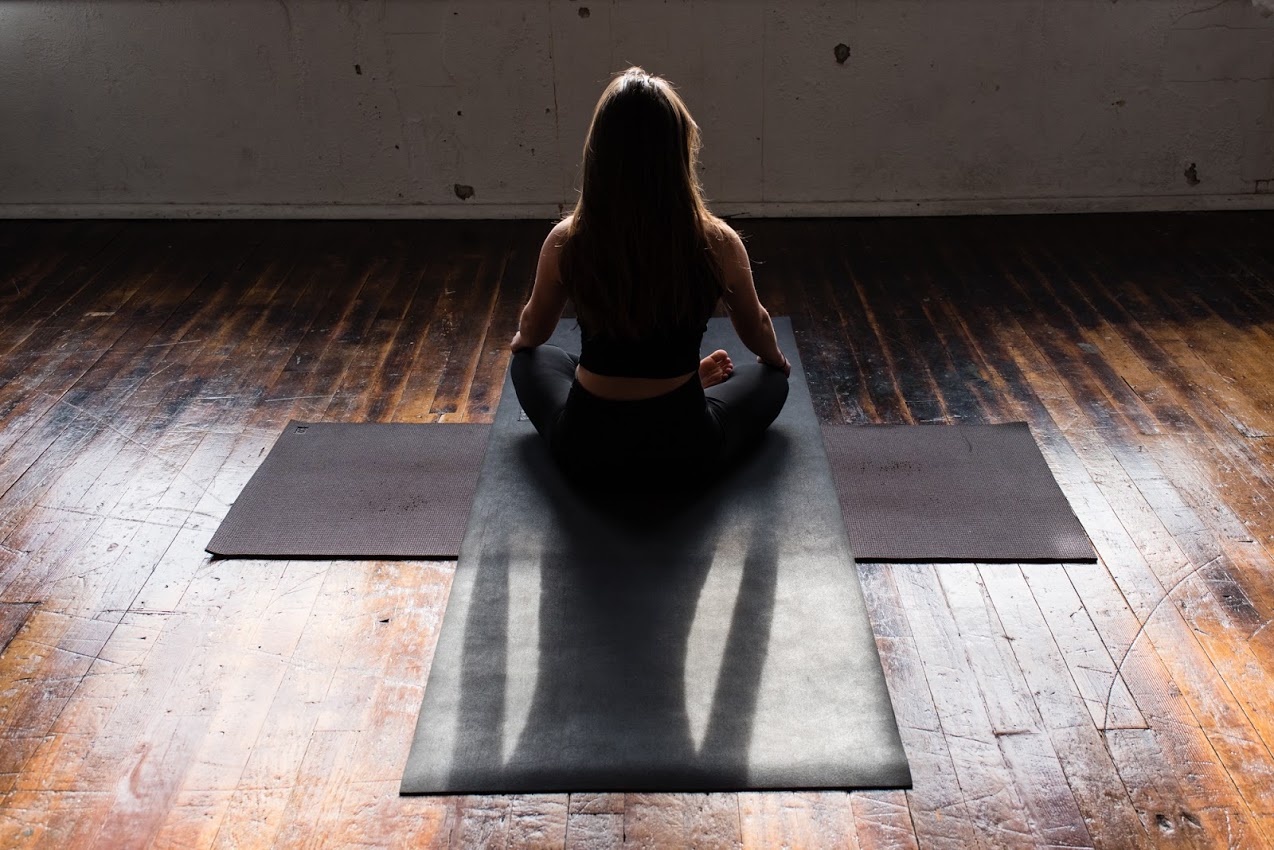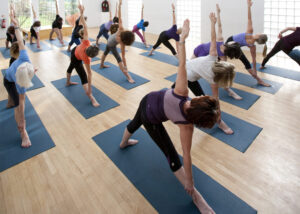Do you want to learn more about the balanced universal yoga style? We got you covered. In this article, we are going to explain what universal yoga is, its foundation, main principles, and much more.
Andrey Lappa, the founder of Universal yoga, brought such practices and understandings that transformed yoga through traditional methods to modern practitioners. It includes all the forms, multiple elements, and techniques of yoga to create a balanced approach.
Featuring both static and fluid movements, it strengthens and stretches the body to relax and meditate. Universal yoga is for everyone, from the beginner to the advanced level, bringing them to experience a new level of entire being and oneness.
So let’s dive deep to learn more about universal yoga.
What Is Universal Yoga?
Universal yoga is the result of scientific research conducted by Andrey Lappa (Kyiv), who systematized the world’s experience of yoga practice. The Universal Yoga training system has absorbed all the best from the most powerful and interesting yoga schools, such as Ashtanga Vinyasa, Iyengar yoga, Tibetan Himalayan yoga, Taoist styles, as well as author’s techniques that are not found in any other system. It would seem impossible to combine such different and even diametrically opposed styles of yoga in one style. Hence the name of this style follows logically – Universal Yoga.
What does Universal Yoga look like?
The universal yoga system is built in such a way that there is a constant opportunity to progress in practice. Gradually universal yogis themselves do not consider it a conscious style of yoga, but say that it is incorporating all styles and directions of practice in which there are no dogmas and strict rules.
The main task of the style developed by Andrey Lappa’s was to demystify yoga. Teachers of this style are not required to build their classes according to some single and rigidly established set of rules.
The main thing is the observance of the following three aspects during practice:
- freedom
- awareness
- creativity
Thus, by practicing Universal Yoga, you are limited only by your personal awareness and are free to use the creative approaches available to you. The universal style is distinguished by a variety of asanas and a combination of dynamic and static sequences. Dynamics is provided by a whole class of vinyasas, which Andrey Lappa described in his works very carefully and in detail. For the static part of the class, extensive and varied sequences of asanas are used.
An important aspect of this style of yoga is conscious transitions from position to position in order to maintain control of attention.
Andrey Lappa developed a whole group of asanas that did not previously exist in hatha yoga – these are asanas for arms. He also classified asanas according to joint mobility and formed a methodology for their sequential study and warm-up during training. The hallmark of the UY class is the mats laid crosswise. This is due to the fact that universal yoga complexes most often work out the body in all projections and directions.
It is often difficult for beginners to grasp the nature of the movement, but over time, as one of the effects of the universal yoga practice, people develop a better perception of space and calm the mind. The founder of the style necessarily includes the Dance of Shiva and Mrita mudra in his practice.
- Shiva’s dance is a dynamic set of sequential movements, similar to dance and martial arts at the same time. Performing this practice on a regular basis, according to Andrey Lappa, allows you to activate processes in all shells of a person, as well as harmonize the right and left hemispheres of the brain.
- Mrita mudra is a type of Savasana. Unlike many modern styles of yoga, in the practices of Andrey Lappa, Mrita mudra can be performed both during and after the practice. The purpose of performing Mrita Mudra is not to rest and relax the body, but, above all, to stop the process of thinking and control the senses.
This style, based on its name, is suitable for practitioners of almost any level, since all sequences of exercises require different levels of difficulty. In addition, classes for beginners and advanced students are traditionally formed. Universal Yoga sequences harmoniously and evenly workout all muscle groups and organ systems during the training session.
The advantage of this style can be called the versatility declared in its name. This yoga practice can really give each practitioner what he needs at this particular stage of his development, whether it is from the point of view of his physical body, or from the point of view of working with finer structures.
Recommendations:
Beginning practitioners can be advised to gradually and consistently include new and more complex elements in their classes. Do not rush to master the inner aspects of universal yoga without preparing your body and mind for them.
Foundations of Universal Yoga
- Mayakoshas
Universal yoga is based on the system of the application of seven Koshas meaning sheath. It follows the practices that allow the balance on each sheath, between the sheath themselves, and between the sheath of practitioners and surrounding space. There are seven Koshas named as Annamaya Koshas, Pranamaya Koshas, Manomaya Koshas, Vijnanamaya Koshas, Anandamaya Kosha, Chittamaya Kosha, Atmamaya Koshas. Thanks to Universal Yoga which involves practices for each of the Koshas, we can experience true and divine nature.
- Balance
Another core foundation of Universal yoga practice is creating balance. The Universal yoga poses focus on the balance of every aspect between strength and stretch, front and back, lower and upper body, legs and arms postures, asymmetric and symmetric postures, and muscle groups. Moreover, there is also a balance between spine asanas, arm asanas, and leg asanas, and different methods to bring balance among Mayakoshas. Among Vinyasas, it includes the balance of belly-up vinyasa, left-side vinyasa, chakra-vinyasa forward, chakra-vinyasa backward.
- Complexity
The foundation is based on the concept that by doing the same practices over and over again, one loses his/ her attention. Universal yoga pose includes complex asanas that keep our focus on the present moment. This way, it keeps the practitioners from removing their pride of being experts in steps and adopting an attitude of being humble, curious, and learning.
Four Aspects of UY
- First feature
The first feature of universal yoga talks about setting yourself karmically free (7th chakra), being responsible for every matter of your life (6th chakra), being creative (5th chakra) and compassionate (4th chakra)
- Second feature
To include all the ideas of unification, balance, and control that should be personalized according to the individual requirements. The idea here is to develop balance on each sheath, between the sheath and surrounding space.
- Third feature
To stand true to the end goal of yoga, this way you will not be affected by personal interpretations, pride, ego, or take yoga as a business. Every step the practitioner takes should lead eventually to the next step.
- Fourth Feature
The fourth feature gave the concept of following the traditional Mayakoshas to prevent individuals from becoming too narrow or specialized. It will help to set you on the path of a true believer in yoga. When you attain the deepest level of practice, all individual steps will be different because the karma of each person is different.
EcoSystem Of Yoga Classes In UY
The Universal yoga ecosystem classifies the entire yoga classes into six:
- Static straightening
- Dynamic strengthening
- Static endurance
- Passive stretching
- Reaction
- Coordination.
Thankfully, the Universal yoga classes have an environment that offers exercises for all six classes.
Conclusion
Now you can experience the self-realization and union of self-consciousness with Universal Yoga. It includes a set of practices that anyone can easily perform. Different components set the foundation including mayakoshas, balance, and complexity of Universal Yoga.
Similarly, some principles of Andrey Lappa’s universal yoga explain the movement and steps to be followed. By practicing those, one can see the rapid progress leading towards the advanced asanas and yogic path of life. It promotes harmony and develops contentment leading to a successful life.
For those who want to set themselves on a journey of discovery and understanding of themselves, Universal Yoga is something they should try their hands on!







